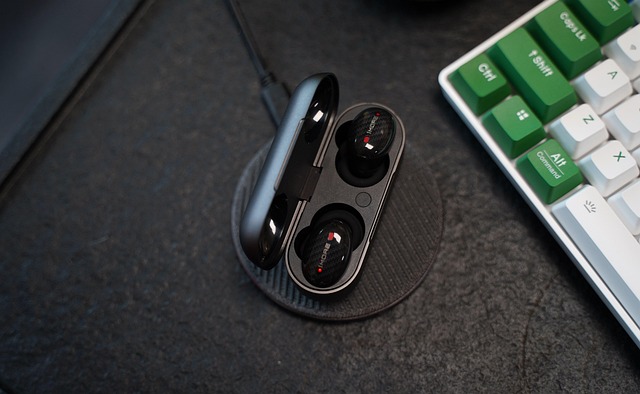The text explores wrinkles as a natural part of aging, influenced by collagen/elastin loss and environmental factors, differentiating dynamic and static wrinkles. Dermal fillers, a popular anti-aging treatment, target these issues using substances like hyaluronic acid to plump skin, stimulate collagen production, and enhance elasticity for immediate, lasting wrinkle reduction around eyes, mouth, and nose. With established safety, immediate results, and precision targeting, dermal fillers offer a preferred choice for many seeking youthful skin, with continuous technological advancements ensuring effectiveness and safety. Different filler types cater to diverse needs, with maintenance involving sun protection, diet, and avoiding smoking for extended benefits. Informed consent and choosing a qualified provider are vital for managing potential side effects and ensuring optimal results.
“Unwind the secrets to achieving a youthful glow with dermal fillers, your ally in the fight against aging. This comprehensive guide explores how these non-invasive treatments transform facial contours by smoothing wrinkles and enhancing volume. From understanding the science behind it to navigating different filler types, we delve into the procedure, results, and safety aspects. Discover how dermal fillers offer a customizable solution for effective wrinkle reduction, helping you unlock a confident, rejuvenated appearance.”
Understanding Wrinkles: Causes and Types

Wrinkles, an inevitable sign of aging, are a result of various factors that contribute to skin degradation over time. Understanding these causes is key to effective anti-aging strategies, especially when considering dermal fillers for wrinkle reduction. The primary culprits behind wrinkles include loss of collagen and elastin, which provide the skin with strength and elasticity. This deterioration can be accelerated by environmental factors such as sun exposure, smoking, and excessive facial expressions.
There are several types of wrinkles, each with its unique characteristics. Dynamic wrinkles, often called expression lines, form temporarily when we make facial movements like smiling or frowning. Chronic static wrinkles, on the other hand, are long-term creases that don’t disappear even when the face is relaxed. Knowing these distinctions is essential as different filler types target specific wrinkle patterns for optimal results in wrinkle reduction.
The Science Behind Dermal Fillers

Dermal fillers are a popular anti-aging treatment that has taken the beauty industry by storm. The science behind it is quite fascinating and rooted in our skin’s natural process. Our skin contains various structural proteins, including collagen and elastin, which keep it firm, supple, and smooth. As we age, these protein levels deplete, leading to the formation of wrinkles and a loss of volume. Dermal fillers mimic this natural structure by injecting hyaluronic acid or other substances into the skin.
These fillers are designed to plump up the skin, smoothing out wrinkles and enhancing facial contours. The injected material hydrates the skin from within, stimulating collagen production, and improving skin elasticity. This non-invasive procedure offers a quick fix for fine lines and creases around the eyes, mouth, and nose, providing immediate results that can last for several months. With their ability to effectively reduce wrinkle severity, dermal fillers are a go-to choice for many seeking youthful, radiant skin.
Safety and Popularity of Dermal Filler Treatments

Dermal filler treatments have gained immense popularity in the anti-aging industry, offering a non-invasive solution for wrinkle reduction. This procedure involves injecting a substance into the skin to enhance its structure and voluminize areas that have lost elasticity over time. The safety of dermal fillers is well-documented, with most products being approved by regulatory bodies worldwide. Modern fillers are made from hyaluronic acid, a natural component of our skin, making them biocompatible and minimal risk.
The appeal of this cosmetic enhancement lies in its immediate results and the ability to target specific areas of concern. As a result, dermal filler treatments have become a preferred choice for many seeking to combat the signs of aging. With advancements in technology, fillers are now tailored to different skin types and needs, ensuring effective and safe wrinkle reduction without significant downtime or side effects.
Different Types of Dermal Fillers: What You Need to Know

Dermal fillers come in various types, each offering unique benefits for anti-aging treatments, specifically targeting wrinkle reduction. The most common types include hyaluronic acid (HA), collagen, and poly-L-lactic acid (PLLA). Hyaluronic acid is a popular choice due to its ability to attract and retain moisture, plumping up the skin and reducing fine lines and wrinkles. Collagen fillers stimulate the production of natural collagen, enhancing skin elasticity and smoothing out deeper creases. PLA is known for its gradual breakdown by the body, providing long-lasting results while allowing for controlled correction over time.
Understanding these differences is crucial when selecting the right dermal filler for individual needs. Different types have varying degrees of duration, consistency, and effects on the skin’s appearance. In terms of wrinkle reduction, HA fillers are quick and effective for immediate results, while collagen and PLA offer longer-lasting solutions, making them ideal for those seeking sustained anti-aging benefits.
How Dermal Fillers Work for Wrinkle Reduction

Dermal fillers are a popular and effective non-invasive treatment for wrinkles, offering a simple solution to achieve a youthful appearance. The process involves injecting a substance into the skin, typically a hyaluronic acid or collagen-based product, which adds volume and plumps up the treated areas. This immediate boost in hydration and structure helps to soften and reduce the depth of existing wrinkles, providing a smoother, more even skin surface.
By filling in the spaces between skin cells and supporting the overall architecture of the face, dermal fillers can dramatically improve the appearance of fine lines and deep furrows, especially around the eyes, mouth, and nose. This effect is long-lasting, often lasting several months to over a year depending on the specific product used, giving individuals a convenient and effective way to combat the signs of aging without surgery or extensive downtime.
Non-Invasive Procedure: What to Expect During Treatment

Dermal fillers for wrinkle reduction have established themselves as a popular non-invasive procedure in the anti-aging arsenal. During treatment, a small amount of filler is injected into specific areas of concern, plumping and smoothing out fine lines and wrinkles. The process is usually quick, taking just 20 to 30 minutes, and minimal downtime is required afterwards.
Patients can expect some temporary redness and swelling in the treated areas, which typically subside within a few days. A skilled provider will use fine needles to inject the filler precisely where needed, ensuring natural-looking results. The filler then integrates with the skin, providing immediate effects that last for several months, offering a visible improvement in skin texture and a more youthful appearance.
Results and Maintenance: Longevity and Touch-ups

The results of dermal filler treatments for wrinkle reduction can last anywhere from 6 months to 2 years, depending on the specific filler type and individual factors like metabolism and lifestyle. This longevity offers a significant advantage over other anti-aging procedures, as it provides a lasting solution for smoother, more youthful skin. Regular touch-ups are often recommended to maintain the desired effect, typically every 4-6 months, ensuring that fine lines and wrinkles are consistently minimized.
Maintenance is relatively straightforward, involving simple lifestyle adjustments and occasional filler top-ups. Protecting your skin from excessive sun exposure, maintaining a healthy diet, and avoiding smoking can enhance the results and prolong the effectiveness of the treatment. By incorporating these practices into your routine, you’ll be able to enjoy the anti-aging benefits for an extended period, revealing a more youthful and radiant complexion.
Potential Side Effects and Risks

While dermal fillers are a popular choice for wrinkle reduction, it’s crucial to be aware of potential side effects and risks. Like any medical procedure, there can be complications, such as redness, swelling, or bruising at the injection site. In rare cases, asymmetry or an uneven appearance may occur, requiring additional treatments.
Additionally, some individuals might experience more severe reactions, including allergic responses or infections. It’s essential to choose a qualified and experienced provider to minimize these risks. Regular follow-ups with your dermatologist are also crucial to ensure optimal results and address any potential issues promptly.
Choosing the Right Clinic and Professional

Choosing the right clinic and professional for dermal fillers is paramount in achieving optimal results for wrinkle reduction. Look for a reputable, licensed, and experienced provider who specializes in aesthetic treatments. Reputable clinics will offer a range of high-quality fillers from renowned brands, ensuring safety and effectiveness.
Ask about certifications, training, and ongoing education to verify their expertise. A good professional will take the time to understand your concerns, goals, and medical history before recommending the most suitable filler type and treatment plan. This personalized approach ensures you receive the best possible care for your specific needs, maximizing both safety and aesthetic outcomes in your quest for youthful-looking skin.
